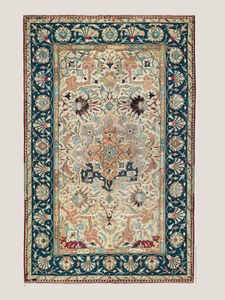Louis from 1866 together with his brother Julius opened Marcus Cassirer & Co. Liqueurfabrik in Wroclaw. He also had his own business from 1861 and built a weaving and textile factory at the central Blücherplatz. The father of them retired from Liqueurfabrik also as the partner and died on October 20, 1879 in Wroclaw and left his possession evenly to his nine surviving children.
his time together with his another brother Isidor Cassirer he moved his loom and textile manufactory to Görlitz. At the beginning of the 1880s, Louis moved to Berlin, where due to the construction activity there was a great need for timber, and became timber trader and supplier this time with the Gebr. Cassirer in Naturholzhandlung.They also came into the possession of numerous apartment blocks in Berlin, which gained considerable value, especially until 1900. Gradually, the brothers Eduard, Salo and Isidor and Max came to Berlin and settled in Charlottenburg, which was still independent at the time. Louis later also became a partner in Kabelwerke, founded in 1896. Cassirer & Co., founded by his sons Hugo and Alfred and his brother Julius.
Alfred Cassirer (born July 29, 1875 in Görlitz, † 1932 in Berlin)
was the son of Louis Cassirer and a brother to Paul, Hugo and Richard Cassirer which as mentioned came from the industrialist family Cassirer. Together with his brother Hugo Cassirer and his uncle Julius Cassirer, he was the owner of Kabelwerke Dr. Ing. Cassirer and Co. in Berlin-Hakenfelde.
Alfred Cassirer was an art collector like his brother Paul and had testamentary that his entire collection was to be given to the city council of Berlin, to bring them to the Märkisches Museum as a permanent loan. As of March 1933, it was presented on the first floor of the Ermelerhaus, a branch of the Märkisches Museum, Breite Straße 11 in Berlin-Mitte, in five rooms. The exhibited works included drawings by Adolph von Menzel, works by Max Liebermann and Max Slevogt, sculptures by Ernst Barlach, Georg Kolbe and August Gaul. The main works of the collection included paintings by French artists such as Gustave Courbet, Édouard Manet, Claude Monet, Edgar Degas, Pierre-Auguste Renoir, Camille Pissarro, Alfred Sisley and Paul Cézanne.
Besides Art and Paintings Alfred had also special interest for Persian carpets and he acquired 40 carpets and by advice of curator of Berlin Museum Mr Ernst Kuhnel he wanted to show his collection in The Museum of Islamic Art and to remain there after his death.His collection after his death in 1932 was moved away to USA but later by efforts of his daughter Eva moved from Detroit Institute of Art (were mostly kept as loan from 1949-2000) back to Berlin till 2012 .One of the most famous ones was a Safavid eight medallion tapestry (kashan? 16th century?) silk and metal thread 2.22x1.41 which Alfred bought in Agay ,Paris for 45000 marks from Mathieu Thierry-Miegle (1826-1905) which is illustrated in this post.



